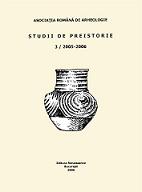Pierres et mammouths. Les ivoires ouvrés au Paléolithique supérieur en Roumanie – données récentes
Stones and mammoths. Ivory artifacts in the Upper Paleolithic of Romania – recent data
Author(s): Corneliu Beldiman, Diana Maria SztancsSubject(s): Archaeology
Published by: Editura Cetatea de Scaun
Keywords: bone and antler industry; Eastern Gravettian; Epigravettian; ivory; lissoir; mammoth; Romania; spear point; transverse sawing; technology; Upper Paleolithic
Summary/Abstract: Recent approaches on ancient artifacts collections enable a detailed discussion on the rare evidence of ivory use in the Romanian Upper Paleolithic. The four objects presented on this occasion were recovered from Eastern part of the country (Moldavia). First artifact is a fragment of mammoth tusk discovered in 1963 in the Gravettian open air site of Lespezi (level IV), situated on the Bistriţa Valley, Bacău County. The age of level IV was estimated on radiocarbon basis at 18 ka. The main characteristic of the object is the presence of débitage traces on the proximal part that prove the using of notching and grooving technique and probably of transverse sawing with fiber; this should be the oldest situation of use of such a technique solution, quite common from the Mesolithic and Early Neolithic in this part of Europe. The second artifact is a fragmented lissoir (or dagger ?) recovered in 1981 from the Gravettian open air site of Cotu Miculinţi (level V), on the Prut valley, Botoşani County. The age of level V was estimated on radiocarbon basis at 19 ka. The object was published by M. Brudiu as made in roe-deer antler. After the direct examination of the tool (in 2001) it was clear that he was made in ivory. Other three objects (but only two published) are the first ivory spear points ever known in Romania; they were recovered very recently from the site of Piatra-Neamţ – “Poiana Cireşului“, Neamţ County in the Epigravettian level II, dated largely between 19 and 16 ka BP. Taking into account the extreme rarity of ivory artifacts in the Upper Paleolithic of Romania it is probably that the provenance of the objets can be found in the near territories of Central and Eastern Europe (Czech Republic, Ukraine, Republic of Moldavia, Russia) where the manufacture and use of such artifacts was common in that epoch.
Journal: Studii de Preistorie
- Issue Year: 2007
- Issue No: 4
- Page Range: 33-51
- Page Count: 18
- Language: French

